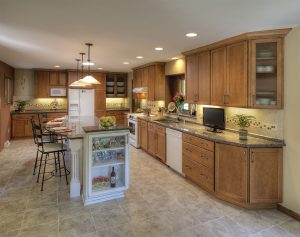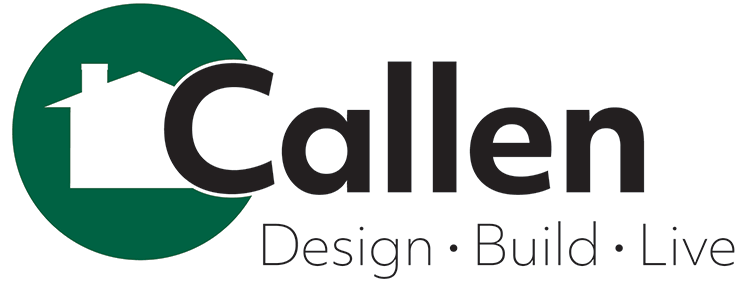 The kitchen’s design plays an integral role in how those within the home function. With that in mind, it’s important to make certain the kitchen reaches its full potential, as it needs to adequately accommodate a family so various kitchen processes, including food preparation and storage, cleaning, dining, and entertaining, can all be conducted in a smooth manner.
The kitchen’s design plays an integral role in how those within the home function. With that in mind, it’s important to make certain the kitchen reaches its full potential, as it needs to adequately accommodate a family so various kitchen processes, including food preparation and storage, cleaning, dining, and entertaining, can all be conducted in a smooth manner.
“The key to achieving a truly efficient kitchen, is to create a functional design plan,” said Paulette Sodemann, CKBR, Senior Sales Design Consultant with Callen, Inc. “The design plan of a functional kitchen generally includes the work triangle and/or multiple workstations, plenty of storage space, and proper lighting.”
The work triangle has been the longtime standard design element for kitchens. It pertains to the positioning of the sink, stovetop, and refrigerator. More specifically, it refers to how each of these points relate to one another to form a triangle. According to this concept, a triangle workflow allows for efficient movement within the space. “Although the traditional work triangle remains relevant to homes with smaller kitchens and a single cook, it’s not as easily applied to larger homes and families as it does not take into account other appliances as well as having multiple cooks in the kitchen simultaneously,” Paulette said.
In this instance, having several workstations is the most ideal solution. Examples of popular kitchen workstations, include islands, tables, countertops, and sideboard counters. “To understand what type and how many workstations are right for you, it’s best to evaluate your personal cooking style,” said Paulette. “How many cooks are there in your household? Where do they prefer to cook? Would it be more beneficial for them to have more prep and cooking areas, or storage and cleanup areas?” Answering these questions is pivotal to ensure that the kitchen flow is efficient and functional.
Ample storage space is another essential element in creating a functional kitchen. From various small appliances to dishware, pantry goods, and more, items typically stored in a home’s kitchen are as various as they are plentiful. It’s evident when storage space is lacking in a kitchen as it negatively impacts the space’s natural flow.
It is necessary to evaluate the personal inventory of kitchen items to determine how much storage space is necessary to house everything comfortably. “A functional kitchen needs to have abundant storage areas to accommodate all kitchen items in convenient places,” she said. “For instance, deep drawers below the stove are perfect for storing pots and pans, while a kitchen island is useful for housing various utensils and produce. Additionally, open shelving is a fun and contemporary way to highlight a kitchen-related collection or store larger items like bakeware or serving trays.”
Lighting is another major consideration of a kitchen’s design. “In order to create various dishes, entertain guests successfully, and maximize safety, appropriate lighting is crucial,” Paulette said. “As a general rule of thumb, you’ll want to refrain from relying on a single light source as this is not sufficient to properly light the entire space, even in a small kitchen. Rather, you’ll want to incorporate a mixture of various forms of lighting, such as accent lighting, task lighting, ambient lighting, decorative lights, and natural light.”
The Sales Design Consultant’s goal is to ensure all areas of the kitchen are well-lit and will assist those in carrying out all kitchen-related tasks, especially meal prep. In addition to functionality, lighting can be used in a strategic manner to highlight certain attractive features in the kitchen, such as a beautifully tiled backsplash. “Don’t be afraid to get creative with style, color, and materials when it comes to selecting the light fixtures themselves,” she said.
Kitchens are such a major part of a home because they are multipurpose. Not only does it serve as a space for cooking, cleaning, and storage, but kitchens can also be a space for eating meals, entertaining guests, and working from home. Taking all this into consideration, it’s important to fully understand a family’s unique lifestyle and needs and how they directly pertain to the kitchen’s use. “Your evaluation will directly affect the kitchen’s design flow, the amount and types of storage space needed, and the forms of lighting you’ll incorporate. The ultimate goal is to create a highly functional, efficient, and customized kitchen that is designed with your family in mind,” Paulette said.
To start the process of completing a kitchen remodeling project to enhance the functionality of the space, call Callen at 414-867-2207 or complete our online contact form.


